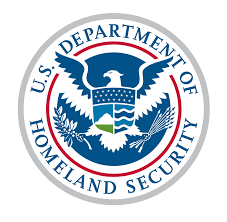
The number of temporary nonagricultural worker visas to be issued for 2023 is expected to nearly double under a new H-2B plan from the Department of Homeland Security, in consultation with the Labor Department.
The plan, which also protects foreign workers from exploitation from unscrupulous employers, was announced by Homeland Security Secretary Alejandro Mayorkas in mid-October, allowed for making these supplemental visas available on Oct. 1, the outset of the new fiscal year.
American industries ranging from seafood processing, hospitality and tourism to landscaping and others depend on seasonal workers to meet demand. The supplemental visa allocation addresses seasonal worker needs where too few American workers are available for hire.
Mayorkas said announcing the full year allocation at the outset of the fiscal year would ensure that businesses can plan for their peak season labor needs. Federal agencies are also bolstering worker protections to safeguard against unscrupulous employers paying substandard wages and maintaining unsafe work conditions.
The plan allows for an additional 64,716 H-2B temporary nonagricultural worker visas in 2023 on top of the 66,000 H-2B visas normally available each fiscal year.
The H-2B supplemental includes an allocation of 20,000 visas to workers from Haiti, Honduras, Guatemala and El Salvador. Homeland Security officials said that this advances a Biden administration pledge to expand legal pathways as an alternative to irregular migration.
It is also consistent with a joint commitment President Biden and President Lopez Obrador of Mexico made in July to work together to broaden opportunities for seasonal and circular labor, and to ensure that migration is a choice and not a necessity.
In addition to the 20,000 visas reserved for nationals in Haiti and the Northern Central American countries, there will be 44,716 supplemental visas available for returning workers who received an H-2B visa or were otherwise granted H-2B status during one of the last three fiscal years.
The regulation allocates these remaining supplemental visas for returning workers between the first half and second half of the fiscal year to account for the need for additional seasonal workers over the course of the year, with a portion of the second half allocation reserved to meet the demand for workers during the peak summer season.
To qualify for the visas, the work must be of a temporary nature, such as seasonal needs. Employers seeking H-2B workers must certify that there are not enough U.S. workers able, willing, qualified and available to perform this work for which they seek a prospective foreign worker.
They must also certify that employing H-2B workers will not adversely affect the wages and working conditions of similarly employed U.S. workers.
Homeland Security and Labor Department officials emphasized the importance of protecting all H-2B workers from exploitation and abuse and of ensuring that employers do not refuse to hire U.S. workers who are able, willing, qualified and available to do this temporary work.
